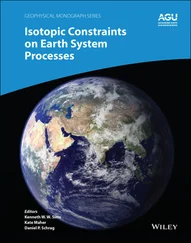1.1.2 Production of Microbial Metabolites
Microorganisms are characterized by a variety of metabolic pathways that allow them to synthesize a host of organic compounds, called metabolites , many of which are potentially useful. In this type of fermentation, it is sought to produce by the metabolic activity of a microorganism a substance that is too complex to be chemically synthesized at a reasonable cost (Jeandet et al. 2013).
Metabolites are generally divided into two categories depending on whether they are produced in relation to growth or not. The first ones are called primary metabolites and are produced in large enough quantities during the exponential growth phase by essential metabolic pathways that are common to many microorganisms. Several primary metabolites produced by fermentation are the residues of the energetic catabolism of microorganisms. These are mainly alcohols, solvents, and organic acids used in food or the chemical industry. Others are derived from cellular anabolism. These are mostly amino acids and vitamins produced for food or pharmaceutical purposes (Sanchez and Demain 2009).
The second ones are called secondary metabolites and are usually produced in small quantities during the stationary phase, and sometimes even during the decline phase, by particular metabolic pathways that are exclusive to a few species and usually give them a survival advantage in the wild. Secondary metabolites form an extremely heterogeneous group of compounds, derived from anabolism, whose main uses are in pharmaceuticals (e.g. antibiotics, growth factors, enzyme inhibitors, etc.). Although not essential for microbial growth, secondary metabolites are very important for health, nutrition, and the economics of our societies (Bérdy 2005).
1.1.3 Production of Microbial Enzymes
Enzymes are proteins that act as catalysts in the biochemical reactions of metabolism (Cooper 2000). When purified, they make it possible to carry out these reactions under controlled conditions. They can be produced from animal, plant, and microbial cells. Nevertheless, microbial enzymes stand out in large quantities and often at low cost by fermentation processes (Raveendran et al. 2018). Most enzymes produced by fermentation are associated with primary metabolism and are primarily used in the agri‐food industry to process many foods; however, more and more enzymes associated with secondary metabolism are produced for pharmaceutical purposes.
1.1.4 Production of Recombinant Proteins
Nowadays, the advances in genetic engineering techniques allow introducing genes from animal and plant cells into microorganisms. These genetically modified cells will produce the so‐called recombinant proteins because their synthesis relies on the recombination of microbial DNA with foreign DNA (Griffiths et al. 2000). Several microbial species have been selected as hosts for such productions (e.g. Escherichia coli , Saccharomyces cerevisiae , Yarrowia lipolytica , etc.). The research and development effort required to develop such strains is, however, colossal, and the recombinant proteins produced by fermentation are therefore almost all dedicated to pharmaceutical uses (e.g. human insulin, human growth hormone, etc.).
1.1.5 Production of Microbial Plasmids
There has been a marked interest in the production of plasmids by fermentation (Carnes and Williams 2014; Carnes et al. 2006). Plasmids are self‐replicating extrachromosomal DNA molecules found in Gram‐negative and Gram‐positive bacteria as well as in some yeast and other fungi (Actis et al. 1999). To produce appreciable amounts, it is first necessary to introduce a plasmid of interest into microbial cells such as E. coli or S. cerevisiae . Subsequently, culturing these microorganisms in a bioreactor develops significant biomass. The plasmids then replicate independently in the new cells produced, and at the end of the fermentation, they are recovered and purified (Carnes and Williams 2014).
First developed in research programs in molecular biology and genetic engineering, plasmids are todays used in new applications of high technology such as in gene therapy (Sousa et al. 2009). Indeed, plasmids obtained by fermentation may contain therapeutic genes derived from the recombination of DNA that will be used to produce previously defective or nonexistent proteins to correct a genetic abnormality in a human organ. These plasmids are inserted into synthetic vectors and injected into the target cells of the affected organ by using particular techniques.
A microbial cell can be used to convert or transform any substance into a value‐added product (Garlapati et al. 2016), a bit like conventional conversions of grape must into wine, wine into vinegar, or milk into yogurt. These transformations contribute to producing very valuable compounds in the pharmaceutical industry, such as antibiotics, vitamins, steroids, and prostaglandins. These conversions are based on the biochemical reactions of microorganisms used such as hydroxylation, dehydroxylation, O‐methylation, O‐demethylation, glycosylation, deglycosylation, dehydrogenation, hydrogenation, C‐ring cleavage of the benzo‐γ‐pyrone system, cyclization, and carbonyl reduction (Cao et al. 2015).
The bioconversion of compounds by microorganisms is much more advantageous than the conventional chemical transformation because the reactions can occur at low temperature and low pressure and without the addition of catalysts. To understand the different steps required to carry out a fermentation process, it is of paramount importance to understand first the microbial metabolism and how a substrate could be transformed by a microorganism to maintain its growth and the production of targeted compounds.
Microorganisms need energy and carbon for their metabolism and are classified as autotrophs and heterotrophs depending on the sources of energy and nutrients (Misra 2011). There are only two sources of energy metabolizable by the cells: light energy captured during photosynthesis and energy from the oxidation of organic and inorganic molecules. Nevertheless, cells can be categorized into nutritional categories depending on how they meet these needs. In bioprocesses, three of these classes are potentially exploited on an industrial scale: phototrophs, chemolithotrophs, and chemoorganotrophs (Jurtshuk 1996).
Phototrophs use light as a source of energy and carbon dioxide (CO 2) as a source of carbon. They include photosynthetic bacteria (cyanobacteria), algae, and green plants. Chemolithotrophs rely on electrons from reduced inorganic compounds, such as iron, nitrogen, or sulfur, as a source of energy (oxidation of the inorganic material) and CO 2as a carbon source. They include several bacterial species that are primarily used in environmental bioprocesses, particularly in aerobic wastewater treatment. The chemoorganotrophs use, as a source of energy, electrons from hydrogen atoms that are part of organic compounds (oxidation of organic matter), which also serve as a carbon source. They are the ones who enter the vast majority of bioprocesses, particularly in fermentation processes (bacteria, yeasts, and molds) and in animal cell cultures. The next sections will discuss the metabolism of this class of cells.
All living organisms need energy to grow and reproduce. In chemoorganotrophs, this energy is obtained during the degradation of organic compounds. Mainly, carbohydrates, lipids, and proteins are oxidized to release the chemical energy they contain. This energy will be then transferred to adenosine diphosphate (ADP) and inorganic phosphate (P i) molecules before being stored in the form of adenosine triphosphate (ATP) ( Figure 1.1). ADP and ATP correspond to molecules of adenosine monophosphate (AMP) plus one and two high‐energy phosphates (AMP ~ P and AMP ~ P ~ P, respectively). The energy is stored in these compounds as high‐energy phosphate bonds. All living cells must maintain steady‐state biochemical reactions for the formation and use of such high‐energy compounds.
Читать дальше












